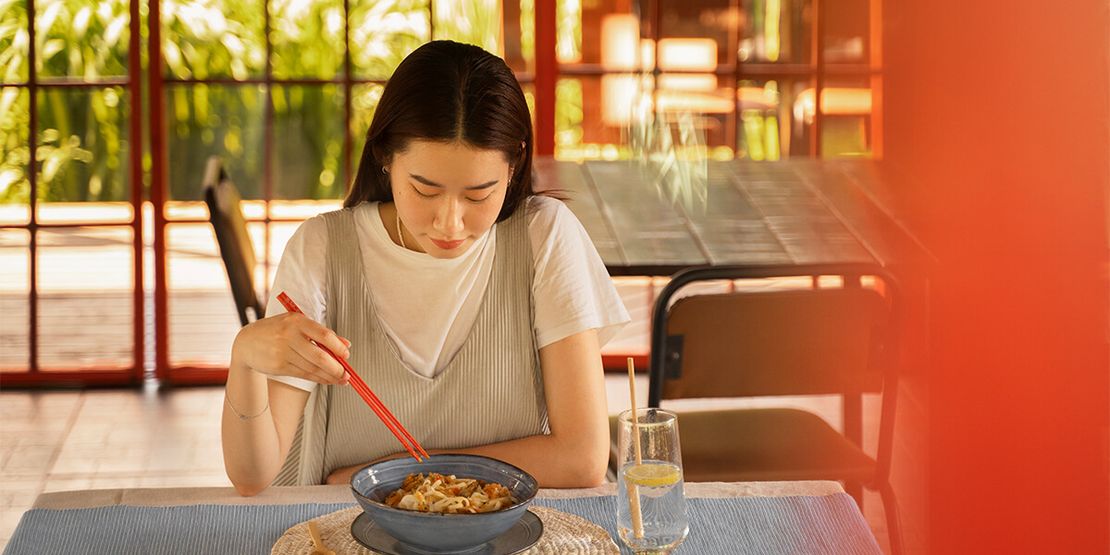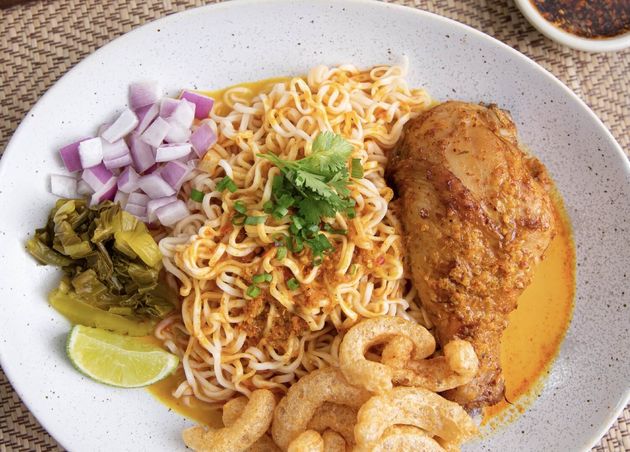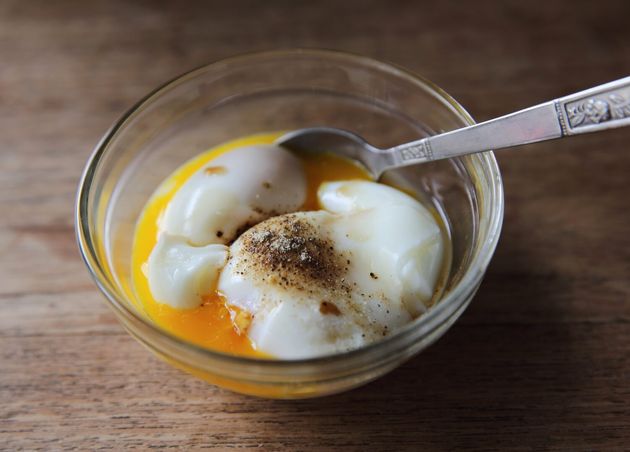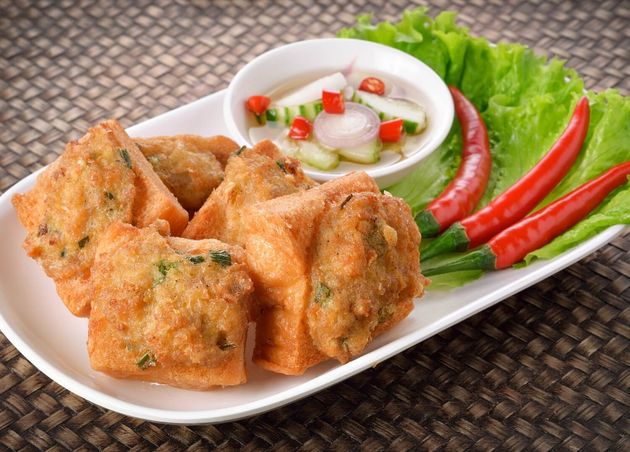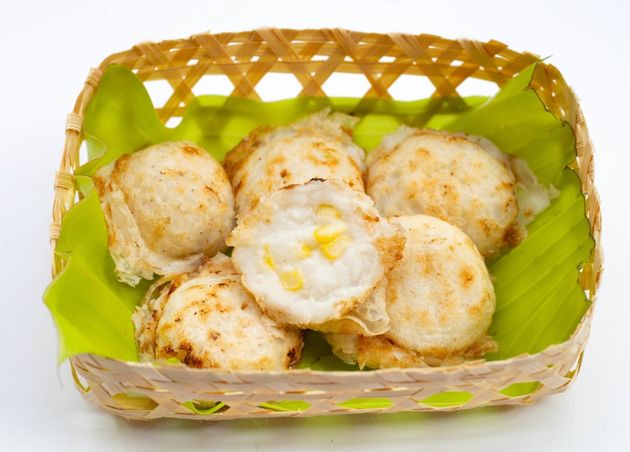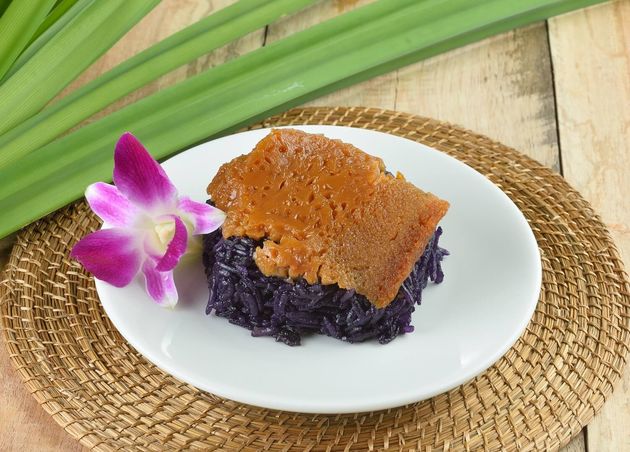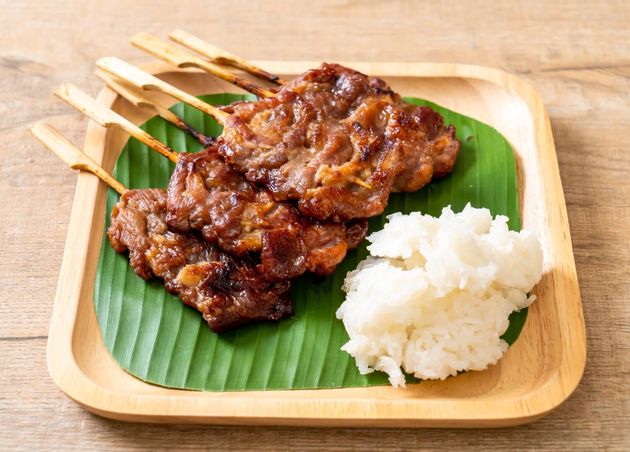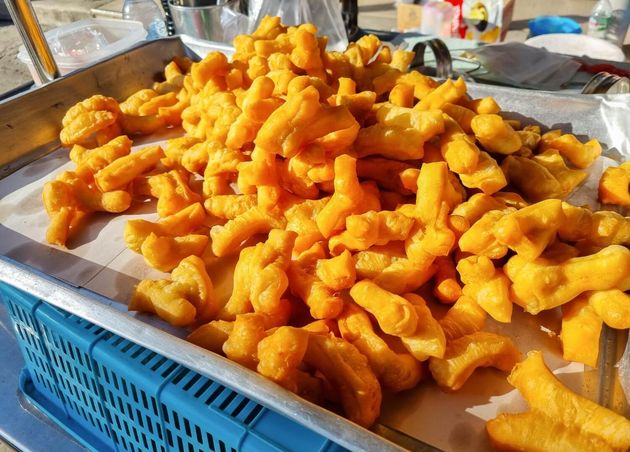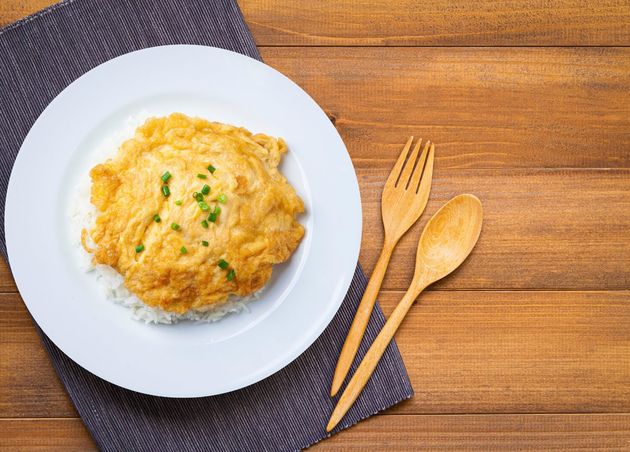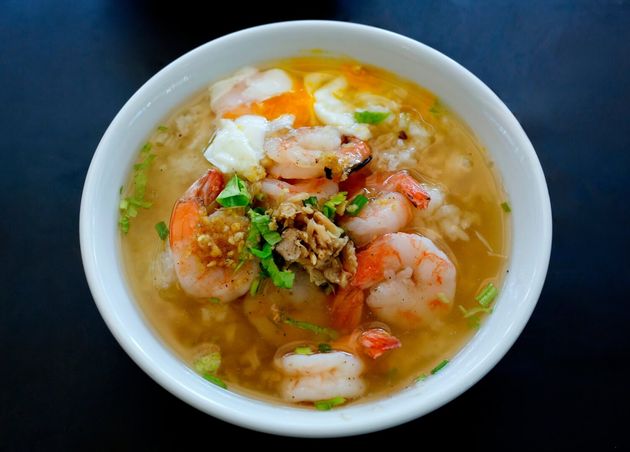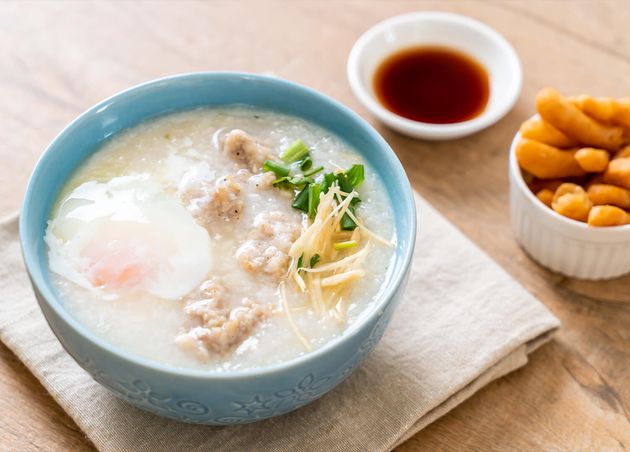Top 10 Best Breakfast Dishes in Thailand (And How to Make Them)
In Thailand, food holds a special place in the hearts of its people. With a diverse culinary landscape that embraces flavors and traditions from various cultures, breakfast in Thailand becomes a delightful exploration of taste and texture.
As morning breaks across the Land of Smiles, breakfast spreads open a world of culinary possibilities. From traditional Thai delicacies to international favorites, breakfast in Thailand embraces the diversity of cuisines that have become a part of the breakfast culture in this captivating country. Every dish tells a unique story of heritage and indulgence, making mornings in Thailand a celebration of flavors worldwide.
What are the Best Breakfast Dishes in Thailand?
Thailand’s breakfast offerings go beyond just fueling the body; they invite locals and travelers alike to explore a rich culinary heritage. Each morning meal reflects centuries of cultural influences, with dishes ranging from quick street food favorites to traditional delicacies. From savory rice soups and grilled meats to the sweet and crispy delights of coconut pancakes, Thailand’s breakfasts offer a glimpse into the country’s diverse and vibrant food culture. Let’s take a closer look at the Top 10 best breakfast dishes in Thailand that make mornings in Thailand so special.
#10 Mama (มาม่า Noodles)
Mama Noodles are instant noodles that come in various flavors, including chicken, shrimp, and tom yum. Known for their flavor-absorbing capacity and chewy texture, these noodles are a versatile option that can be easily customized to suit individual tastes. They are particularly popular among students and busy professionals who appreciate their convenience.
- Ingredients:
- 1 package of Mama instant noodles
- 2 cups of water
- Optional toppings: vegetables (like bok choy or carrots), eggs, cooked meat (such as chicken or shrimp), or spices (like chili flakes or lime)
- Instructions
- In a pot, bring 2 cups of water until it boils.
- When the water reaches a boiling point, add the Mama Noodles and cook for about 3-4 minutes until they are soft.
- Stir in the seasoning packet that comes with the noodles. Mix well to ensure the flavor is evenly distributed.
- For nutrition and flavor, you can add vegetables, a boiled egg, or leftover meat during the last minute of cooking.
- Once everything is cooked through, pour the noodles into a bowl and enjoy hot.
Mama Noodles are cherished for their convenience and versatility. They can be prepared in just minutes, making them an ideal meal for busy individuals or families. Additionally, the ability to customize with various toppings allows for endless creativity in the kitchen.
#9 Kai Luak (ไข่ลวก Thai Soft-Boiled Eggs)
Kai Luak, or Thai soft-boiled eggs, is a simple yet beloved breakfast dish that captures the essence of Thai morning meals. Known for its creamy yolk and delicate flavor, this dish is often enjoyed with various accompaniments, making it a staple in many Thai households.
The eggs are cooked just enough to achieve a runny yolk while the whites remain tender. This dish is typically served with a side of soy sauce, pepper, and sometimes crispy fried shallots, allowing for a customizable flavor experience.
- Ingredients:
- Fresh eggs (as many as desired)
- Soy sauce (for drizzling)
- Black pepper (to taste)
- Optional: crispy fried shallots or fresh herbs for garnish
- Instructions:
- Bring a pot of water to a gentle boil. Carefully add the eggs and boil for about 6-7 minutes for a soft-boiled consistency.
- Once cooked, quickly halt the cooking process by placing the eggs in an ice bath or running them under cold water.
- Gently tap the eggs on a hard surface to crack the shell and peel them carefully. Serve the soft-boiled eggs in a bowl.
- Drizzle soy sauce over the eggs and sprinkle with black pepper. For added texture and flavor, top with crispy fried shallots or fresh herbs.
Kai Luak is cherished for its simplicity and versatility. The creamy yolk pairs beautifully with the salty soy sauce, creating a comforting breakfast option that is both satisfying and nutritious. It’s also quick to prepare, making it an ideal choice for busy mornings.
#8 Khanom Pang Na Moo (ขนมปังหน้าหมู Thai Pork Toast)
Khanom Pang Na Moo, or Thai Pork Toast, is a beloved street food delicacy that showcases the perfect blend of flavors and textures characteristic of Thai cuisine. This simple yet tasty dish has captured the hearts of many, making it a popular choice for breakfast or as a snack throughout Thailand.
Khanom Pang Na Moo consists of minced pork seasoned with aromatic spices, spread onto slices of bread, and then deep-fried until golden and crispy. The result is a delicious blend of savory pork filling and crunchy toast, often served with sweet chili sauce for dipping. This dish embodies the essence of Thai street food—flavorful, accessible, and satisfying.
- Ingredients:
- 200g minced pork
- 4 slices of white bread (preferably thick-cut)
- 2 tablespoons of fish sauce
- 1 tablespoon of sugar
- 1 teaspoon of black pepper
- 2 cloves of garlic, minced
- Fresh coriander, chopped (for garnish)
- Oil for frying
- Instructions:
- In a bowl, mix the minced pork, fish sauce, sugar, black pepper, and minced garlic. Mix well until all ingredients are well incorporated.
- Take each slice of bread and evenly spread a generous layer of the pork mixture on one side.
- Heat the necessary oil over medium heat in a frying pan to submerge the toast slices.
- Carefully place the bread slices with the pork side down into the hot oil. Fry until the pork is cooked through and the bread is golden brown and crispy, about 3-4 minutes per side.
- Remove the fried toast from the pan and place it on paper towels to drain extra oil. Cut each slice into quarters and serve hot with sweet chili sauce for dipping.
Khanom Pang Na Moo is cherished not only for its delectable taste but also for its convenience. It can be enjoyed as a quick breakfast on the go or as a satisfying snack any time of day. The combination of savory pork and crispy bread creates a delightful contrast that appeals to both locals and visitors.
#7 Khanom Krok (ขนมครก Coconut Pancakes)
In the vibrant tapestry of Thai cuisine, Khanom Krok stands out as a beloved breakfast treat that perfectly embodies the country's culinary creativity. These delicious coconut pancakes are visually stunning and a culinary feast, making them a popular choice among locals and tourists alike.
Khanom Krok are small, round pancakes made primarily from rice flour and coconut milk. They are traditionally cooked in a special cast-iron pan with small, round indentations, which gives them their signature shape. The outer layer is crispy, while the inside remains soft and creamy, creating a delightful contrast in textures.
- Ingredients:
- 1 cup of rice flour
- 1 cup of coconut milk
- 1 cup of water
- 1/2 teaspoon of salt
- 1/2 teaspoon of sugar
- Optional toppings: green onions, corn, or sweetened coconut
- Instructions:
-
- In a bowl, mix rice flour, coconut milk, water, salt, and sugar. Whisk until smooth and let it rest for about 30 minutes.
- Preheat your khanom krok pan over medium heat. Lightly grease each indentation with oil or coconut cream.
- Pour a small amount of batter into each indentation, filling it about halfway. Cover the fry pan and cook for about 5-7 minutes until the edges turn golden brown and the tops are set.
- If desired, add toppings such as chopped green onions or sweetened coconut on top of the batter before covering the pan again for an additional minute.
- Carefully remove the pancakes using a spoon or spatula, and serve warm with additional coconut cream or sugar on the side.
Khanom Krok is celebrated not just for its taste but also for its versatility. The pancakes can be enjoyed in various ways—sweet or savory—making them suitable for any palate. Their popularity extends beyond breakfast; you will find them at street food stalls and markets throughout Thailand, enjoyed as snacks or desserts at any time of day.
#6 Khao Neow Dam Sang Kaya (ข้าวเหนียวสังขยา Sticky Rice with Custard)
Khao Neow Dam Sang Kaya is a traditional Thai dessert that’s often enjoyed as a breakfast treat or snack. It beautifully combines the chewy texture of black sticky rice with the rich, creamy sweetness of Thai custard (sang kaya), creating a perfect balance of flavors and textures. This dish is beloved for its deep, earthy tones from the black sticky rice and the luxurious, velvety custard made from coconut milk and eggs.
While it’s typically enjoyed as a dessert, Khao Neow Dam Sang Kaya’s satisfying richness makes it a popular breakfast item, especially for those craving something sweet to start their day.
To make this delightful dish, you will need two main components: the black sticky rice and the Thai custard.
- Ingredients for the Black Sticky Rice:
- 1 cup black sticky rice
- 2 cups water (for soaking)
- 1 cup coconut milk
- 1/4 cup sugar
- A pinch of salt
- Ingredients for the Thai Custard (Sang Kaya):
- 4 large eggs
- 1 cup coconut milk
- 1/2 cup brown sugar
- 1/2 teaspoon pandan essence or vanilla extract (optional)
- Instructions:
-
Prepare the Black Sticky Rice:
- Soak the black sticky rice in water for at least 4 hours or overnight.
- Drain the rice and steam it for 20-30 minutes until fully cooked and tender.
- In a saucepan, warm the coconut milk, sugar, and salt over normal heat, stirring until the sugar dissolves. Pour the coconut milk mixture over the steamed sticky rice and let it absorb the flavors. Set aside.
-
Make the Thai Custard:
- In a bowl, mix the sugar, eggs, coconut milk, and pandan essence or vanilla extract. Stir until the mixture is smooth.
- Pour the custard mixture into a heatproof dish or steamer. Steam the custard over normal heat for about 20-25 minutes or until set and firm to the touch.
- Let the custard cool slightly before serving.
-
Assemble the Dish:
- Serve the black sticky rice topped with slices of the Thai custard. You can drizzle additional coconut milk over the top for extra richness if desired.
Khao Neow Dam Sang Kaya offers a unique blend of flavors that reflect Thailand’s love for coconut-based dishes and tropical ingredients. The slightly nutty and chewy black sticky rice contrasts beautifully with the sweet and creamy custard, creating a satisfying breakfast or snack. It’s often enjoyed warm but can also be served at room temperature.
#5 Khao Niew Moo Ping (ข้าวเหนียวหมูปิ้ง Grilled Pork with Sticky Rice)
Khao Niew Moo Ping, a favorite Thai breakfast and street food, combines succulent grilled pork skewers with sticky rice, creating a simple yet hearty meal that’s perfect for on-the-go eating. This dish is loved for its smoky, savory flavors and tender, juicy pork paired with the chewy texture of sticky rice. Found at street stalls throughout Thailand, it’s a convenient and delicious way to start the day.
Moo Ping, the grilled pork component, is marinated in a flavorful mix of herbs and sauces before being cooked over a charcoal grill, giving it a distinct, irresistible smokiness. When paired with sticky rice, the slightly sweet and savory pork provides a perfect balance, preparing a delicious dinner that perfectly embodies Thai street food.
- Ingredients:
- 500g pork shoulder, thinly sliced
- 2 tablespoons soy sauce
- 2 tablespoons fish sauce
- 1 tablespoon oyster sauce
- 1 tablespoon sugar (preferably palm sugar)
- 1 tablespoon garlic, minced
- 1 teaspoon coriander root, minced
- 1 tablespoon vegetable oil
- Skewers (soaked in water to prevent burning)
- Instructions:
- Take a bowl and combine the soy sauce, fish sauce, oyster sauce, sugar, garlic, and coriander root. Stir well until the sugar dissolves.
- Add the thinly sliced pork to the marinade, ensuring each piece is well-coated. Cover and let the pork marinate in the fridge for at least 2 hours or overnight for the best flavor.
- Thread the marinated pork onto skewers.
- Preheat a charcoal or gas grill to normal heat. Grill the pork skewers for about 10-15 minutes, turning them over now and then, until the pork is cooked through and has a hint of burn on the edges.
- Serve with steamed sticky rice on the side.
Khao Niew Moo Ping is a versatile breakfast option that suits all kinds of eaters. The grilled pork’s smoky aroma and rich marinade flavors complement the neutral taste of sticky rice, making it a satisfying meal. For a more flavorful bite, locals often enjoy Moo Ping with a dash of spicy chili sauce or nam jim jaew (a Thai dipping sauce made with lime, chili, and fish sauce).
#4 Patongo (ปาท่องโก๋ Thai Dough)
Patongo, the Thai version of fried dough, is a beloved breakfast treat often enjoyed with a cup of hot coffee or soy milk. Crispy on the outside and soft on the inside, these golden-brown dough sticks are a popular street food found across Thailand, offering a simple yet satisfying way to start the day.
Patongo was originally inspired by Chinese youtiao (fried dough sticks) but has been embraced and adapted into Thai culinary culture. Served as part of a traditional breakfast or as a snack, these fried dough sticks are often paired with sweetened condensed milk or pandan custard, adding a delightful contrast of flavors.
- Ingredients:
- 2 cups all-purpose flour
- 1 teaspoon baking powder
- 1 teaspoon baking soda
- 1/2 teaspoon salt
- 1 teaspoon sugar
- 3/4 cup water
- Vegetable oil (for frying)
- Optional: sweetened condensed milk or pandan custard for dipping
- Instructions:
- In a large bowl, stir together the required amount of flour, sugar, baking soda, baking powder, and salt.
- Gradually add the water, stirring until the dough comes together. Work the dough slightly until it becomes elastic and smooth.
- The dough should rest for about 30 minutes after being covered with a moist cloth.
- Once rested, roll the dough out into a thin sheet, about 1/4 inch thick. Cut the dough into long, approximately 3-inch-long and 1-inch-wide strips.
- Using a wok or deep pan, heat the vegetable oil over medium heat. Enough heat should be in the oil for the dough to fry quickly.
- Take two strips of dough, stack them on top of each other, and press them together in the middle to form a pair.
- The dough should be fried in hot oil until crispy and golden brown. This should take about 1-2 minutes per batch.
- Remove the Patongo from the oil and drain on paper towels.
Patongo is versatile and can be enjoyed in both sweet and savory ways. Traditionally served with Thai-style coffee, soy milk, or warm tea, these fried dough sticks are also commonly dipped in sweetened condensed milk, coconut jam, or pandan custard for an added layer of flavor. In some regions, Patongo is paired with savory dishes like Thai rice soup (Khao Tom), providing a crispy contrast to the comforting porridge.
#3 Khao kai jeow (ข้าวไข่เจียว Thai Omelet with Rice)
Khao Kai Jeow, or Thai omelet served with rice, is one of Thailand’s most popular breakfast dishes. Simple yet packed with flavor, this dish features a fluffy, crispy-edged omelet made with just a few ingredients, offering a quick and satisfying meal that can be enjoyed any time of the day.
The beauty of Khao Kai Jeow lies in its simplicity. The omelet, traditionally made with eggs beaten together with fish sauce, is fried in hot oil until golden and crispy on the outside while staying tender and fluffy on the inside. This dish is served over a bed of steamed jasmine rice and is an ideal blend of textures and flavors.
- Ingredients:
- 2 eggs
- 1 tablespoon of fish sauce
- 1-2 tablespoons of vegetable oil (for frying)
- A pinch of white pepper (optional)
- Steamed jasmine rice (for serving)
- Optional toppings: chopped spring onions, fresh chilies, or Sriracha sauce
- Instructions:
- Take a bowl, crack the eggs into it, and mix it with the fish sauce (or soy sauce) along with a pinch of white pepper. Beat the eggs vigorously until fluffy.
- In a wok or pan, heat the vegetable oil over medium-high heat. Make sure the oil is hot enough before adding the eggs to create crispy edges.
- Spread the egg mixture into the pan, allowing it to spread out naturally. Let it cook undisturbed for about 2-3 minutes until the edges are crispy and the center is cooked through.
- Flip the omelet carefully and cook for another minute until both sides are golden brown.
- Serve the omelet over steamed jasmine rice, and garnish with your preferred toppings, like chopped spring onions or fresh chilies.
Khao Kai Jeow is a go-to meal for many in Thailand, and it is appreciated for its simplicity and the comforting flavors of the fluffy egg and rice combination. While it’s a quick breakfast option, this dish can also be customized with various fillings, such as minced pork, crab, or vegetables, to make it more substantial.
#2 Khao Tom (ข้าวต้ม Rice Soup)
Khao Tom, or rice soup, is a traditional Thai breakfast dish that provides warmth and nourishment in a simple yet flavorful way. Popular across Thailand, Khao Tom is a comforting bowl of rice cooked in a light, flavorful broth. Often enjoyed in the early morning, this dish is perfect for those seeking a satisfying yet gentle start to the day.
Unlike heavier meals, Khao Tom is light on the stomach while still delivering a burst of savory goodness. The soup’s delicate flavor comes from a blend of fragrant jasmine rice, a clear broth (often chicken or pork), and the subtle seasonings of garlic and ginger. What makes Khao Tom truly special is the broad toppings and ingredients that can be added, allowing for endless variations.
- Ingredients:
- 1 cup of jasmine rice, rinsed
- 5-6 cups of water or chicken broth
- 1-2 cloves of garlic, minced
- 1 inch of fresh ginger, thinly sliced
- 200g ground pork, shrimp, or chicken (optional)
- Fish sauce and soy sauce to taste
- Fresh cilantro, spring onions, and fried garlic for garnish
- Instructions:
- In a large pot, bring the water or chicken stock to a boil.
- Add the washed jasmine rice and lower the heat when the water is boiling.
- Stir in the minced garlic and sliced ginger, allowing the flavors to infuse as the rice cooks.
- Simmer the rice for about 20–30 minutes until it softens and thickens into a soup-like consistency.
- If adding meat, form small pork or chicken meatballs and drop them into the soup. If using shrimp, add them in the final few minutes of cooking.
- For the taste, add more soy sauce and fish sauce to the soup.
- Serve hot, garnished with fresh cilantro, chopped spring onions, and crispy fried garlic for extra flavor.
Khao Tom is often customized according to personal taste. Some enjoy it with slices of Chinese sausage, poached eggs, or dried shrimp, while others prefer it plain. The beauty of Khao Tom lies in its simplicity and versatility, making it a beloved breakfast staple across the country.
#1 Congee (Jok โจ๊ก)
Congee, often called rice porridge or "jok" in Thailand, is a beloved breakfast dish that offers a delightful departure from familiar morning fare. While it shares similarities with oatmeal, congee has unique characteristics.
Unlike its Western counterpart, congee starts its culinary journey with fragrant jasmine rice as its base. The rice breaks down gently through a slow-cooking process in water or broth, resulting in a creamy porridge. This creamy texture is one of the defining features of congee, setting it apart from oatmeal.
Another notable distinction is the savory flavor profile of congee. Unlike the sweetness of American oatmeal, congee offers a comforting taste that appeals to discerning palates.
- To make congee, follow these steps:
- Let one cup of jasmine rice run through a cold water rinse until the water flows clean.
- Bring 6 cups of water or broth (such as chicken or vegetable broth) to a boil in a large pot.
- Add the rice already rinsed to the boiling water and reduce the heat to low.
- Allow the rice to at least simmer for around 1 to 1.5 hours, stirring occasionally, until it reaches a creamy consistency. Adjust the cooking time (this depends on your preferred thickness).
- While the rice is cooking, prepare your desired toppings. Popular choices include freshly made pork meatballs, boiled or poached eggs, fresh ginger slices, spring onions, or any other toppings you prefer.
- Once the congee reaches the desired consistency, season it with salt or fish sauce according to your taste.
- Serve the congee hot, topped with your chosen toppings and garnishes.
It's important to note that congee offers flexibility for customization. Feel free to experiment by adding shredded chicken, seafood, or vegetables to create unique variations. Adjust the cooking time and consistency to your liking as well.
🐻 Top 10 Recap: Best Breakfast Dishes in Thailand
Looking for a delicious way to start your day in Thailand? Here’s a quick recap of the Top 10 Best Breakfast Dishes that showcase the country's vibrant culinary culture. Each dish offers a unique taste of Thailand, making your breakfast experience unforgettable!
|
Rise and Shine with the Best Breakfast Dishes in Thailand
Thailand's breakfast scene is a delightful blend of flavors and traditions that reflect the country's rich culinary heritage. From quick street food to comforting dishes enjoyed at home, each breakfast item tells a story of culture and community. Whether you're indulging in the savory goodness of Khao Tom or the sweet allure of Khanom Krok, these dishes not only fuel your day but also offer a taste of Thailand's vibrant food culture. Embrace the morning flavors and make your breakfast in Thailand an unforgettable experience!
Start your day right with the perfect breakfast that truly offers an immersive experience reflecting the vibrant food culture of the Land of Smiles and beyond.
📍Pin it!
Tle (Hungry Bear)
A designer and photographer by trade, Tle is obsessed with improving user experience and never accepts the status quo. She loves good food, enjoys experimenting with fusion cuisine, and can even taste the difference in fish varieties in Fish & Chips. A pro in hotels, lifestyle, holidays, and beyond, Tle loves exploring the world and is, of course, a tech enthusiast. As a UX researcher and future product developer by profession, she brings a fresh perspective to many things.
The Bear Travel | Experience like a Local
A fast-growing Thailand Travel Blog written by Expats and Thais since 2017. We will share our experiences and ideas from an insider point of view for you to create your own unique Thailand experience.
For the latest news and events about The Bear Travel, follow us on Facebook, Instagram, Twitter, Pinterest, or YouTube.
For any issues, concerns, or queries, don’t hesitate to CONTACT us.
Recommended for you
Travel to Koh Phangan Guide: Everything You Need to Know
Dr. Theodore (Professor Bear)
Thailand Golf: St. Andrews 2000 in Pattaya
The Bear Team


